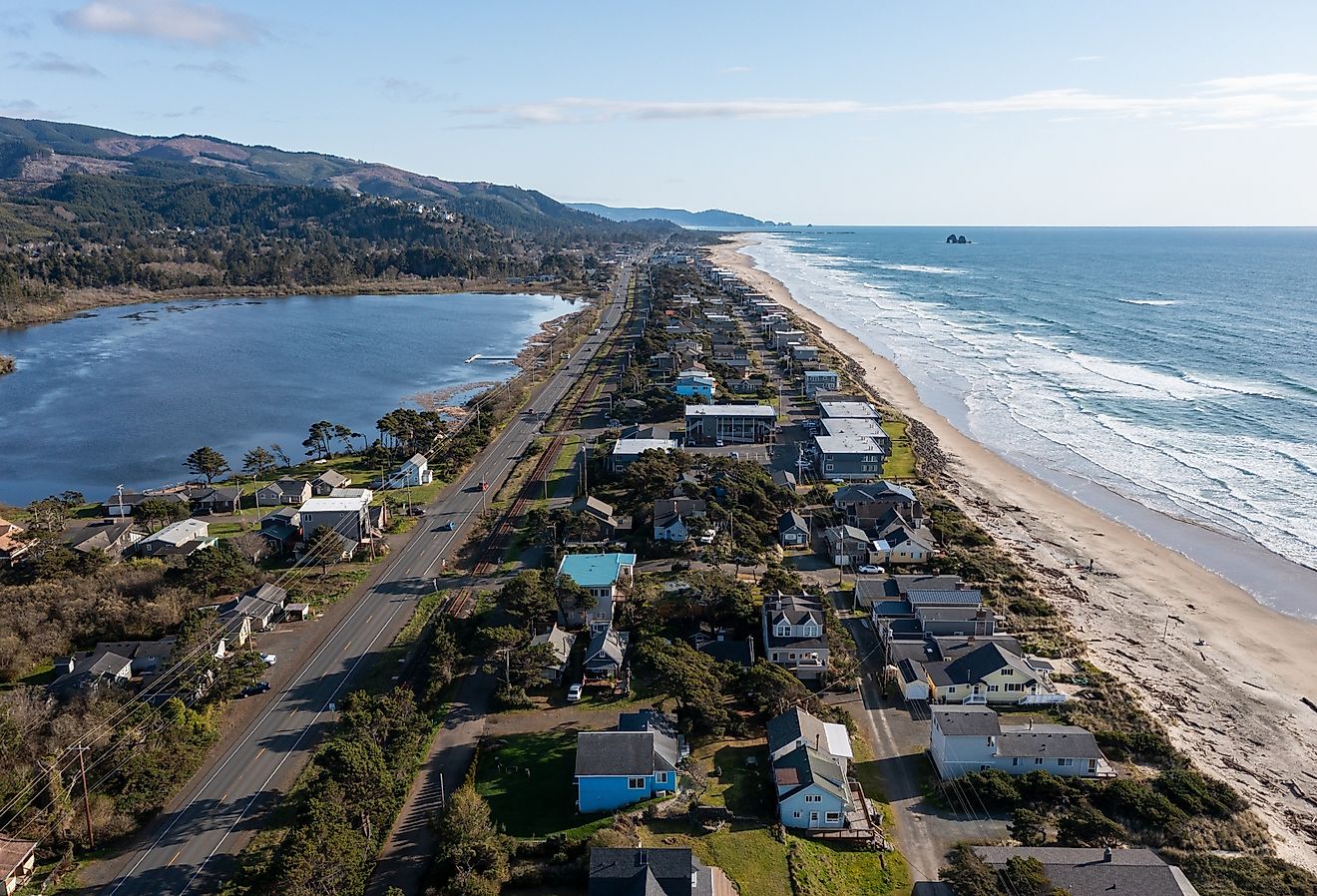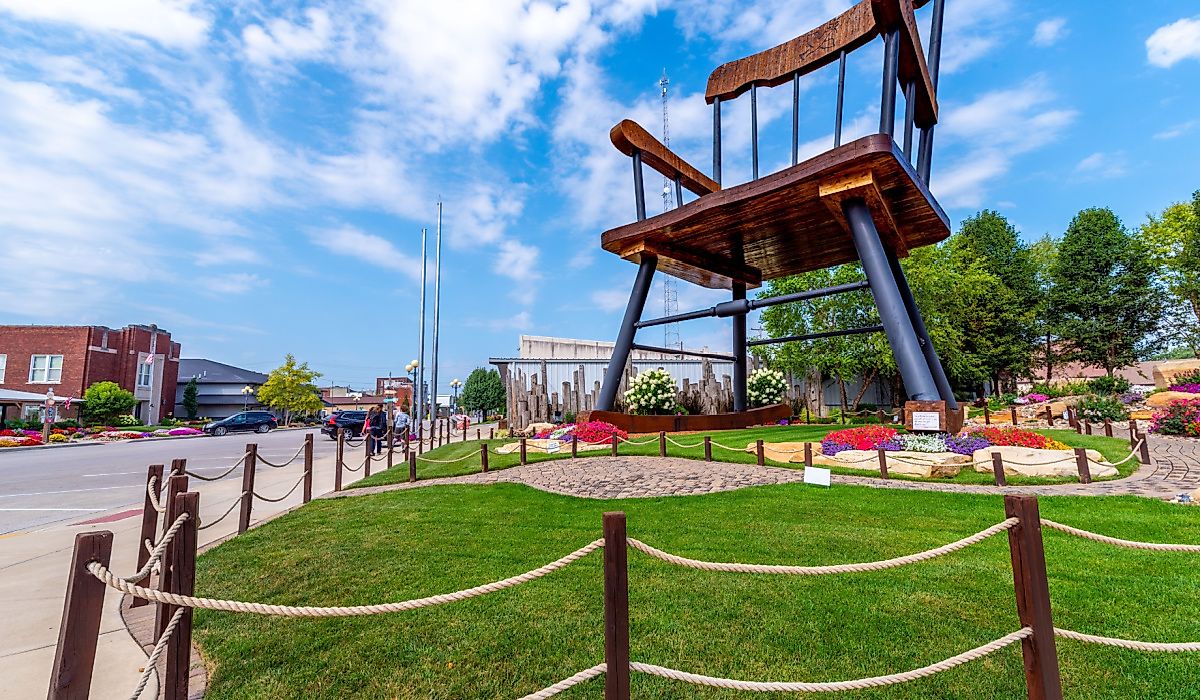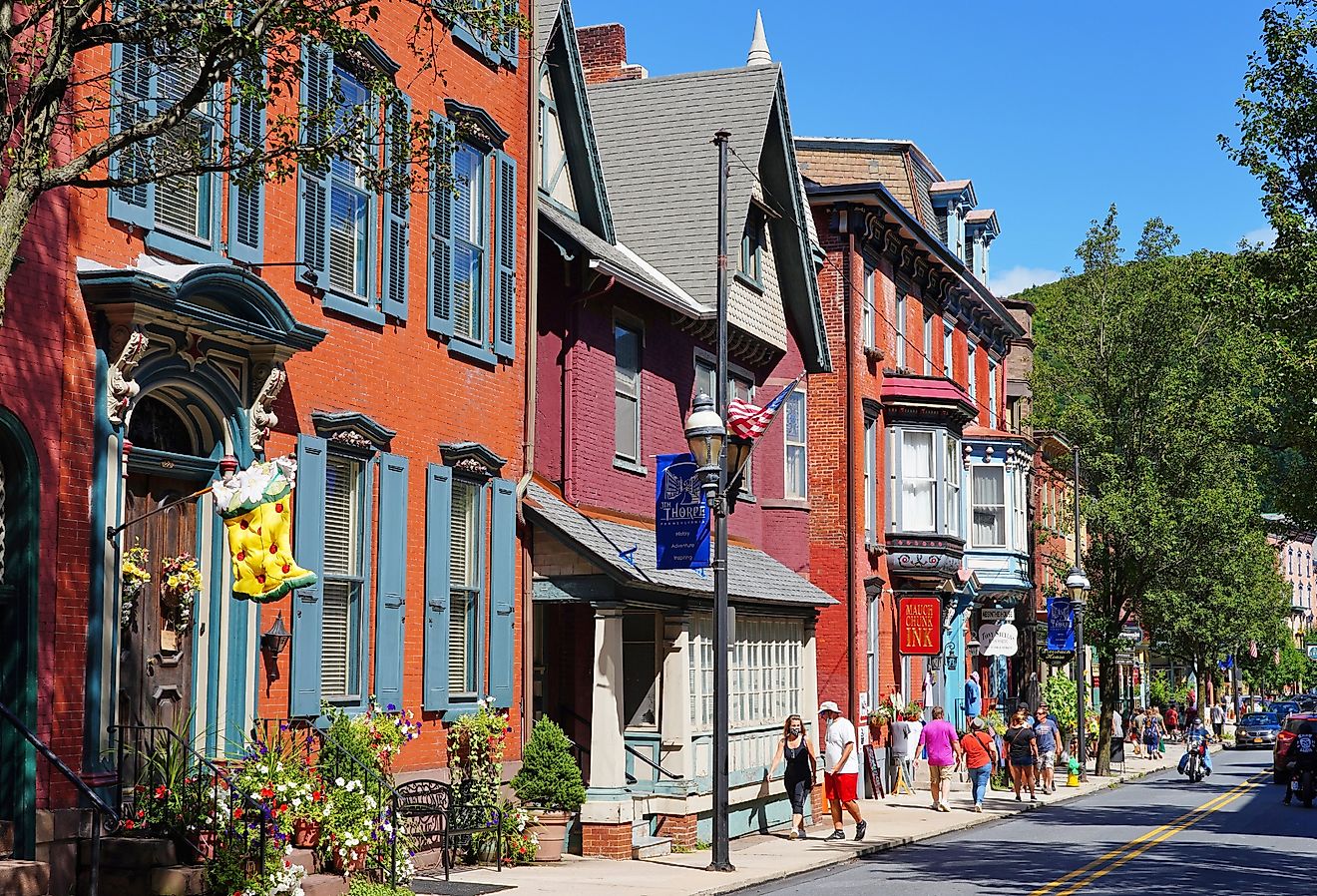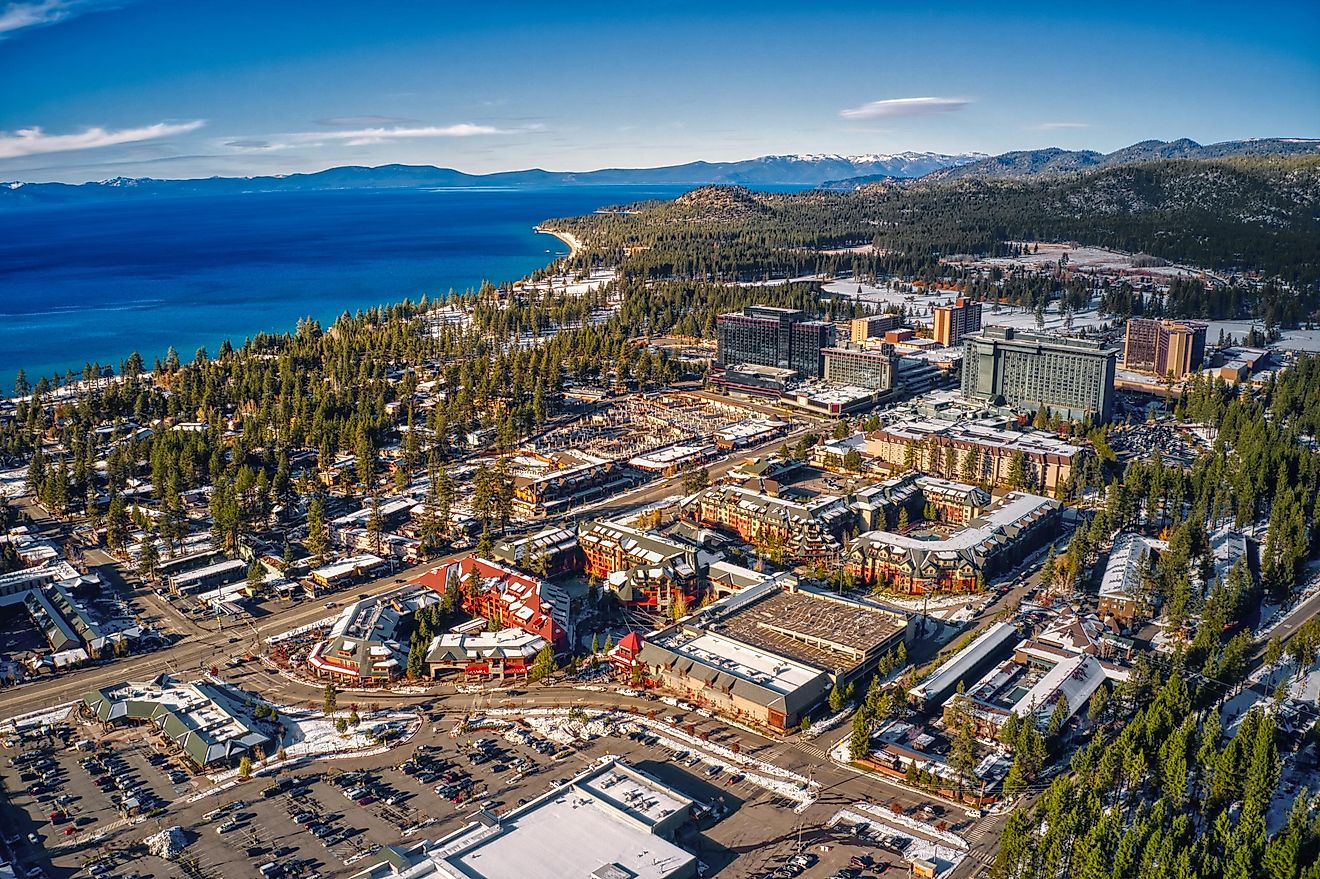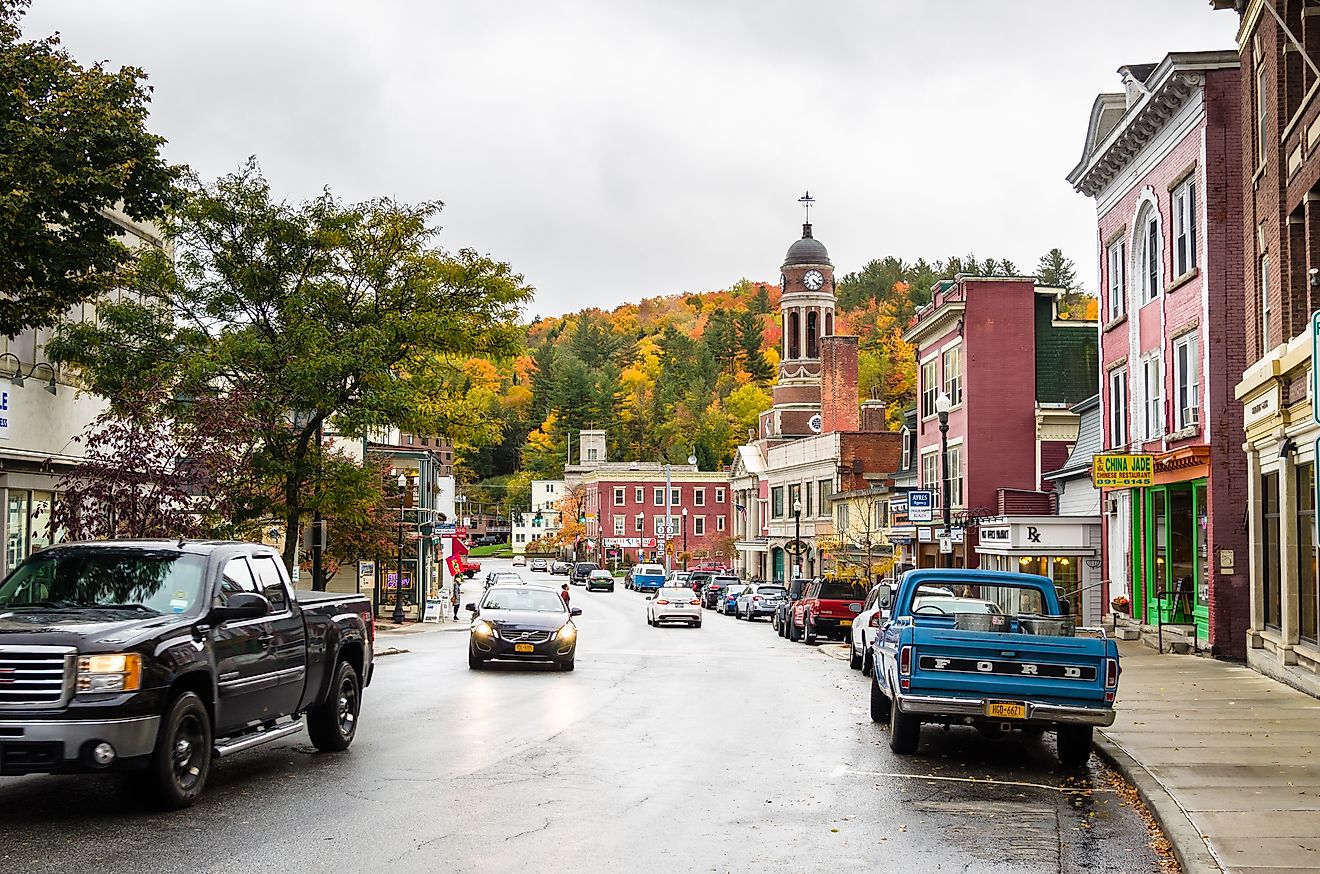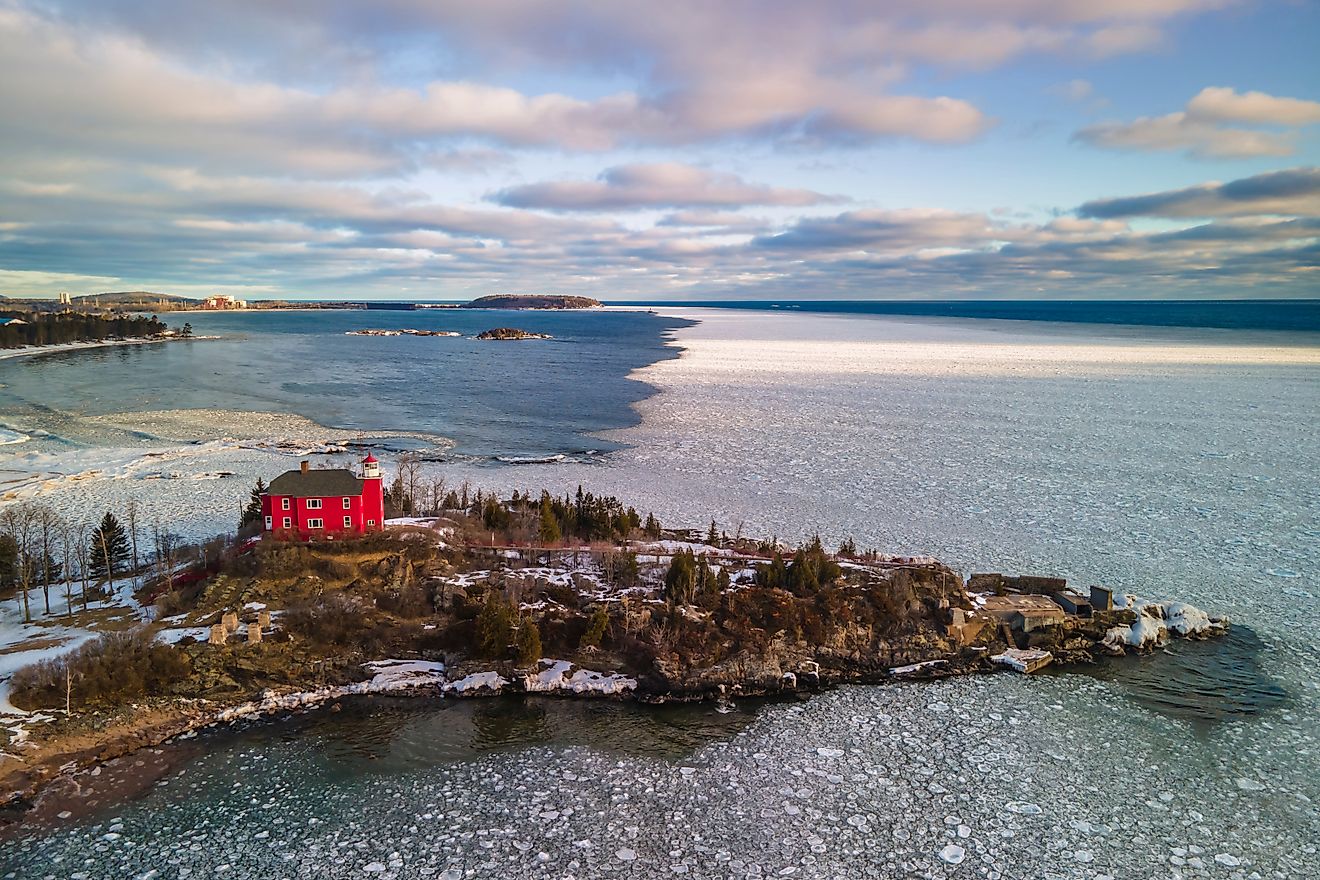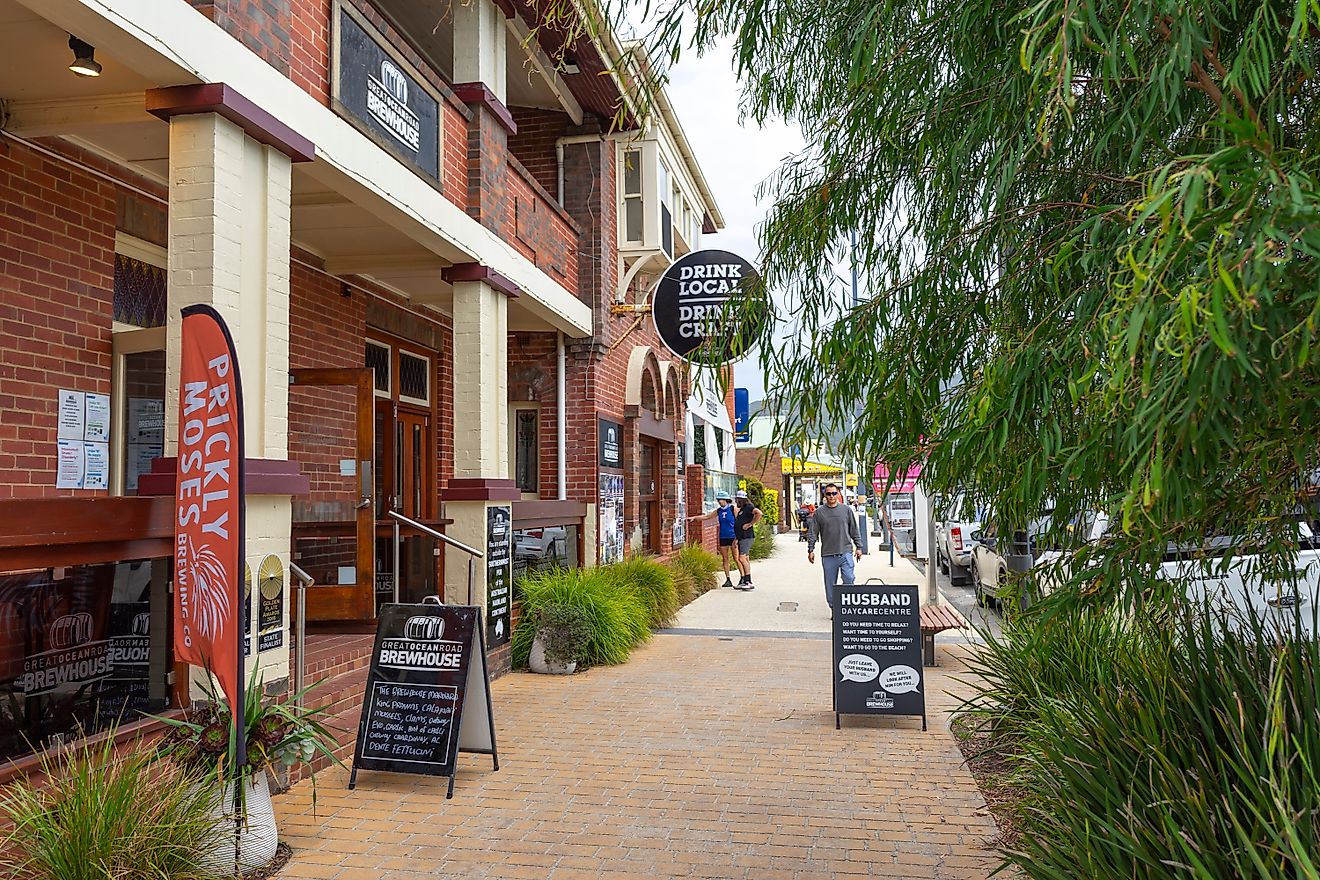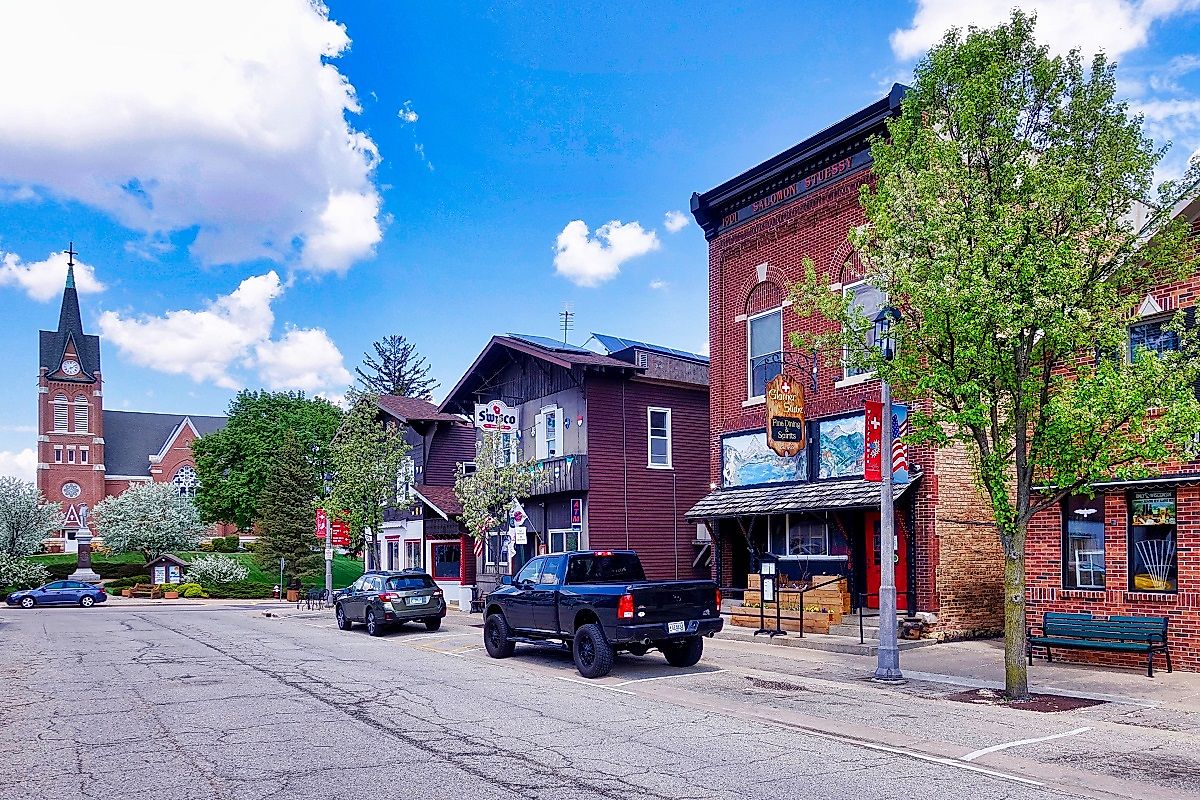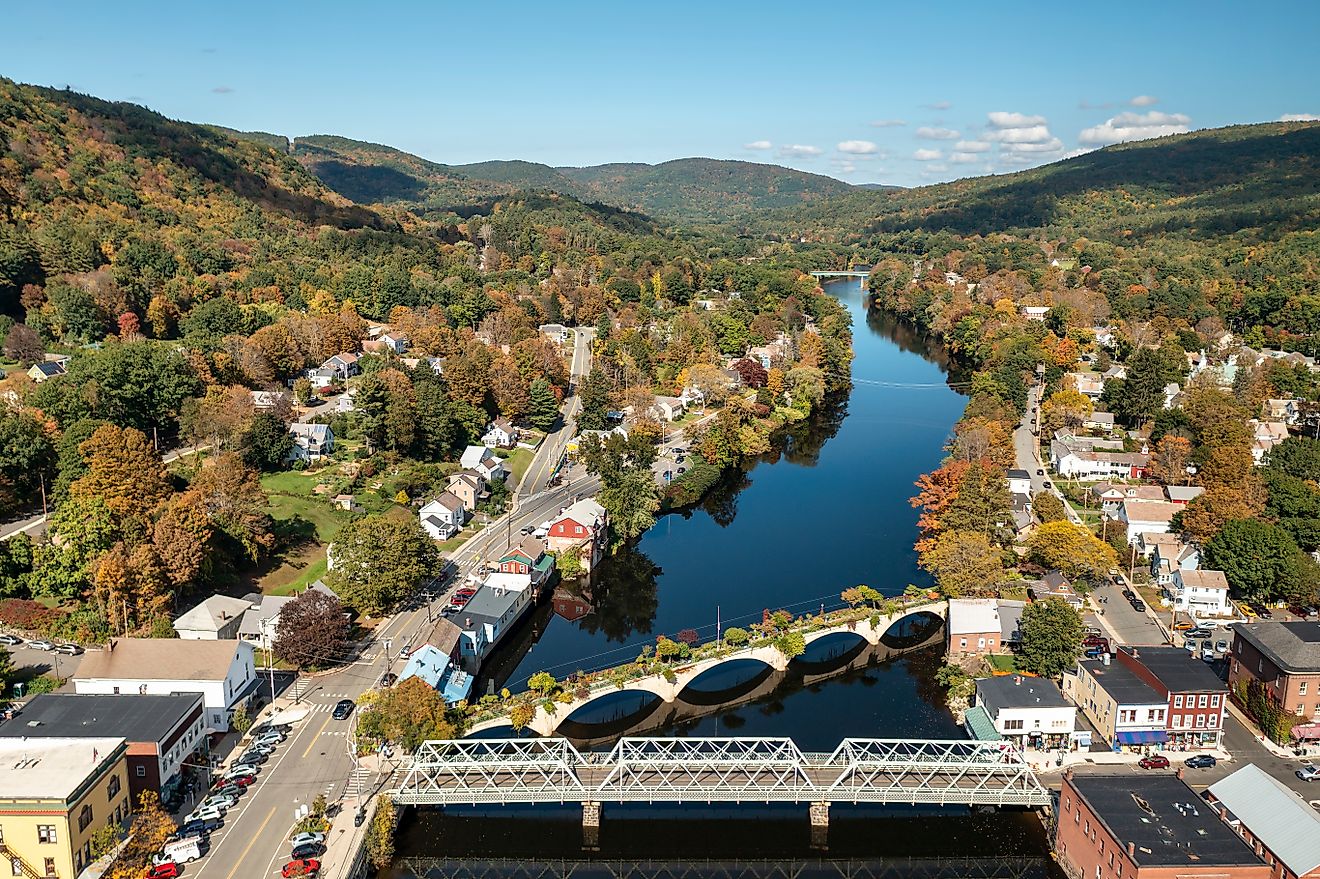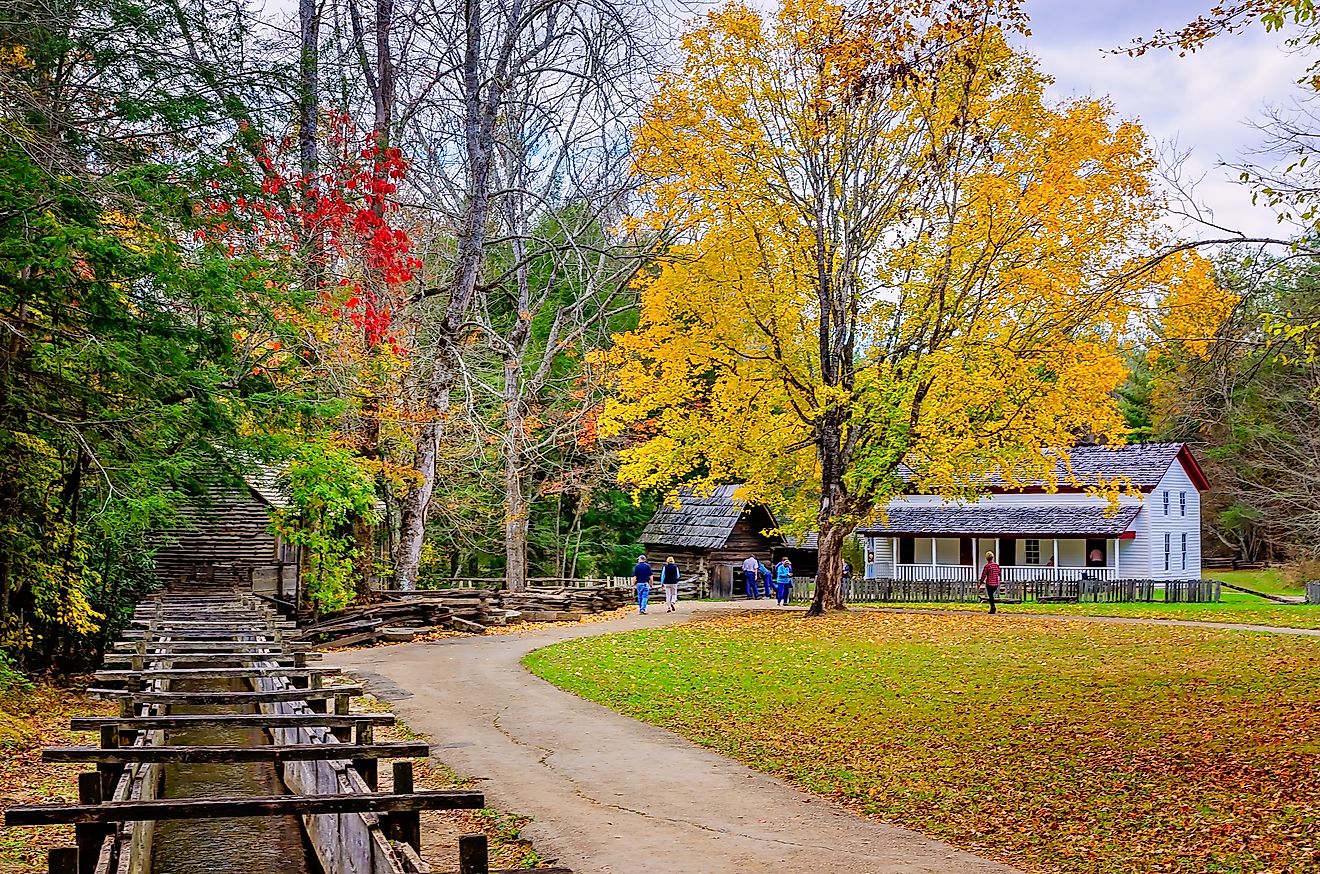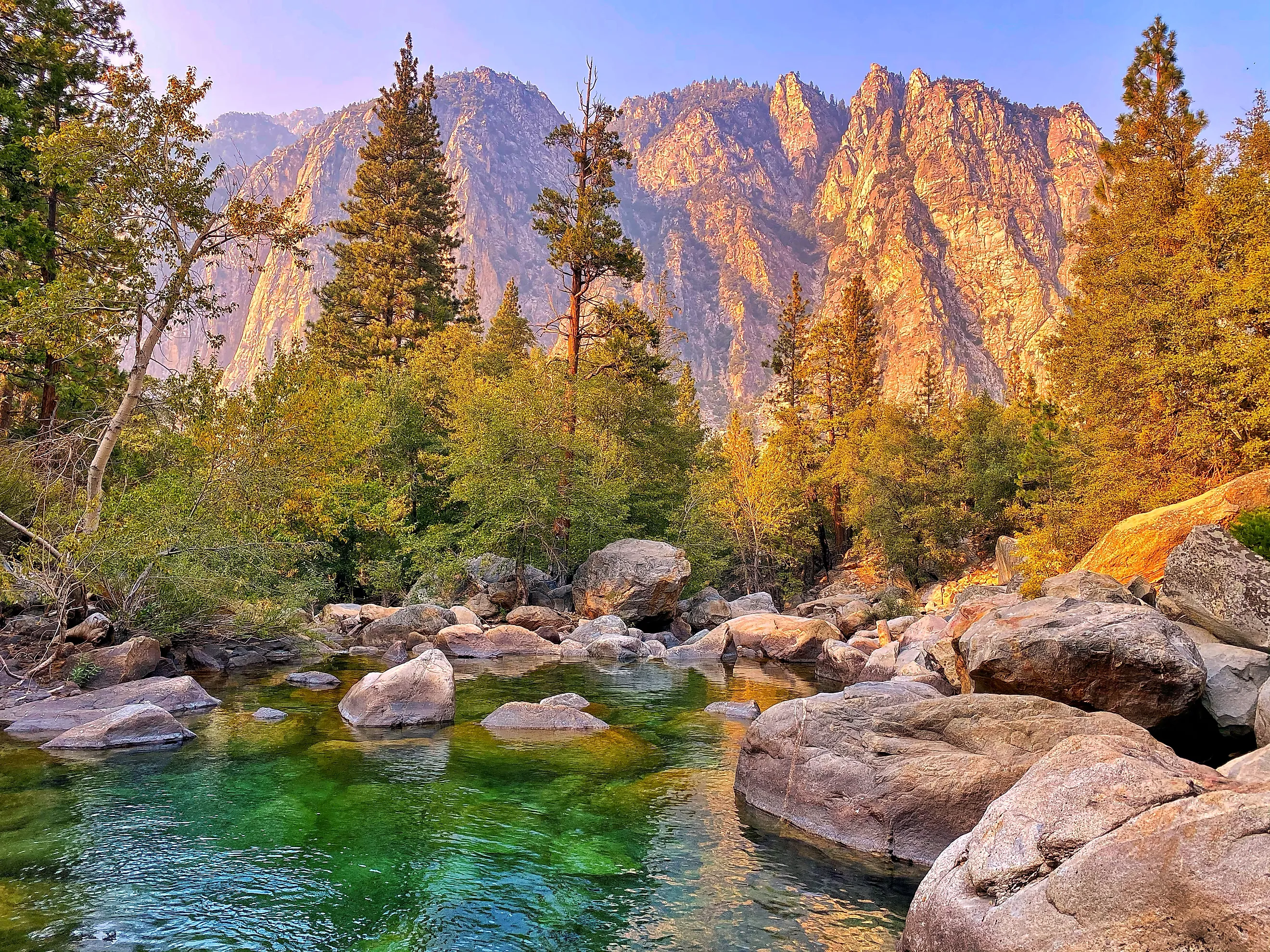
Hiking Climbing and Exploring the Vast Wilderness of Kings Canyon National Park
California is noteworthy for many majestic national parks in the Sierra Mountains. One of the lesser-known ones is a picturesque place called Kings Canyon National Park, which carves one of America's deepest canyons through a Giant Sequoia realm.
Within this national park, one can explore the second deepest canyon in the U.S. while also seeing the tallest trees in the world: the Sequoias. In fact, you don't just have to look up at these trees, you can also explore the interior of them within a long collapsed and hollowed out Sequoia that once served as a saloon and hotel.
There's all manner of landmarks and natural phenomena to see here in Kings Canyon National Park from majestic domes to colorful cave deposits. Read on to learn more about this hidden California treasure of a national park.
Location, History
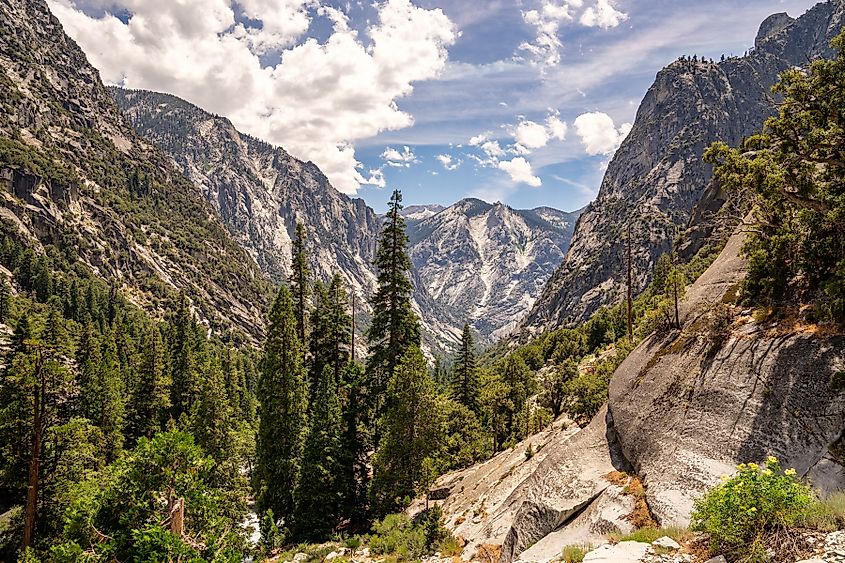
Located in the Sierra Nevada Mountain range within California, Kings Canyon's geological history is fairly recent on a global scale. The Sierra Nevada range was formed around 10 million years ago through tectonic activity. The mountains have a gradual slope to the west and east, which was what allowed glaciers to flow down them.
Over the last 2.5 million years, glaciers came down from the Sierra Nevada and slowly carved Kings Canyon itself, which is more than a mile in depth at 7,700 feet, making it the second deepest canyon in the U.S., only surpassed by Hells Canyon between Idaho and Oregon. This gives it a similar appearance to Yosemite National Park further north in California.
The area around Kings Cayon National Park were inhabited by several different Native American groups such as the Mono, Yokuts, Paiute, and Western Shoshone. Although Europeans did visit the area, especially during the California Gold Rush, not many settled down until the Sequoias in nearby Sequoia National Park were discovered and a major logging industry sprung up in the area.
When naturalist John Muir came to Kings Canyon in 1873, he noted with enthusiasm that the canyon was similar to Yosemite Valley. His writings would later be used to push for conservation of the area. In 1890, President Benjamin Harrison signed two bills, one establishing the Sequoia National Park to protect these giants from logging and another establishing Kings Canyon as a national park, which was then named General Grant National Park after Ulysses S. Grant.
This park was a lot smaller than the current Kings Canyon, due how rugged the terrain was. Over the next few decades, Los Angeles began eying the undeveloped section of Kings Canyon, looking to set up a dam at Kings River for its hydroelectric power. This issue became a huge fight between power companies and conservationalists until President Franklin D. Roosevelt settled the issue in 1940 by signing a bill to create the Kings Canyon National Park, which greatly expanded the existing Park with more than 400,000 acres of land. A few years later in 1943, the administrations of Sequoia National Park and Kings Canyon National Park were combined to save costs, and it has remained the same ever since.
Landmarks
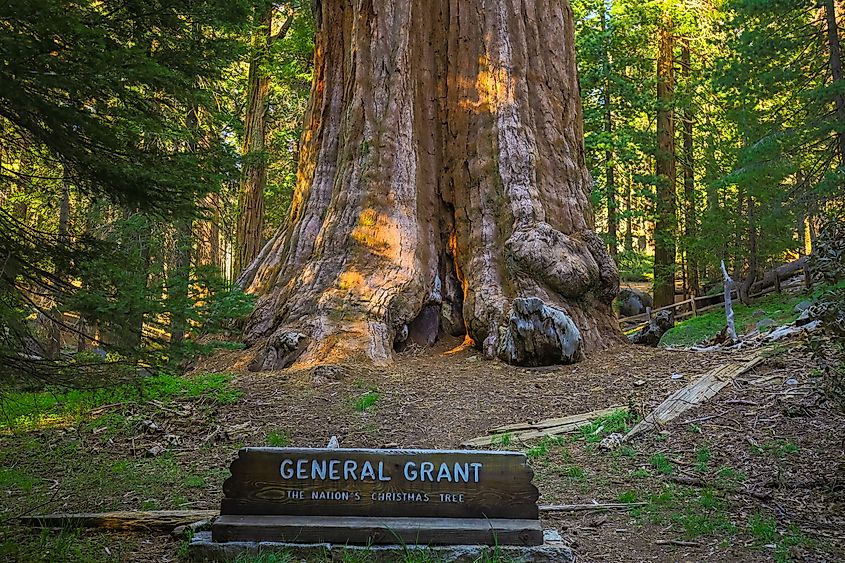
Despite the fact that Sequoia National park is more well known for the Sequoia trees, Kings Canyon National Park also has its fair share of these magnificent plants, especially in the General Grant Grove.
This area was part of the original General Grant National Park and includes many Sequoia trees within a half mile loop. The most famous one is the General Grant Tree, a 268 foot tall behemoth that is the second largest tree in the world(or third if you don't count its branches), surpassed only by General Sherman within the Giant Forest Grove. It used to be called the Nation's Christmas Tree, when a little girl in 1925 said it would make a wonderful Christmas tree. As a result, many Christmas programs would be held at the tree and a wreath would be placed.
The grove is also home to another famous Sequoia, or rather a fallen one: the Fallen Monarch. While no one knows for sure when this tree fell over, we do know that it was completely hollowed out by a fire prior to it collapsing. The inside of the tree is so large that it would end up serving as a shelter, a stable for the United States Cavalry and even a hotel and a saloon.
That isn't the only place to see Sequoias within the park. The largest grove is actually located right in the middle of the Redwood Canyon within the Redwood Mountain Grove as mentioned above. In 2021, a large portion of the grove caught on fire which led to a significant number of trees dying. However, there are still many massive trees within the grove such as the Roosevelt Tree, that has a volume of 35,000 cubic feet.
The other major area of the park Cedar Grove sits within the canyon itself and features several large granite domes. On the western border of the park is The Obelisk, a 9,700 foot dome that is popular among climbers and the North Palisade, the third tallest mountain in the Sierra Nevada range at 14,248 feet.
Within Cedar Grove is King's River itself which flows on the canyon floor. By following the canyon floor, one can discover several waterfalls as well such as Roaring River Falls, a 40 foot waterfall.
Not every landmark here is natural, there are also several historic landmarks here, such as the Gamlin's Cabin. Built in 1872, this is the oldest surviving building in the area and was used by Israel and Thomas Gamlin as a base for their sheep grazing. They had previously lived in inside the Fallen Monarch.
One final landmark of note is the large network of caves one can find primarily on the western end of the park. There are more than 200 caves in the area, with some still featuring active streams while others are dry, as they were formed by long since dried streams of water.
Phenomena
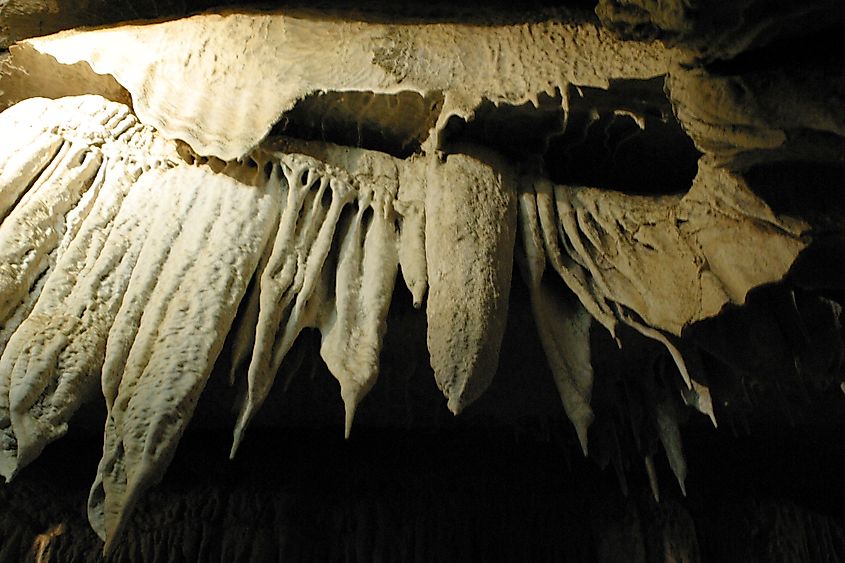
One of the most intriguing natural phenomena's in Kings Canyon isn't above ground, but rather underground.
The park is filled with caves and karst streams. Karst is a term for a landscape made up of limestone and dolomite, which was formed by the rocks dissolving over time due to water. The National Park Association states that it would be worth it to conserve Sequoia and Kings Canyon National Park just due to the rich diversity of life and minerals within these caves alone.
Within these caves are a series of beautiful minerals that can form colorful deposits within the pitch black darkness. They come in all forms of colors, such as blue, yellow, black, red, green and others.
Some caves in the park such as Boyden Cavern feature shield formations. These are speleothems which are formed by mineral deposits over time. In the case of shields, they form when water oozes out of cracks in the bedrock, forming a shape reminiscent of a shield.
These caves also have some never before seen invertebrates living within them. In fact, scientists have found 40 species in the caves since 1965 including spiders, scorpions, beetles and the Crystal Cave millipede. The fragile environment within these caves creates an ecosystem for many rare creatures.
Things to Do
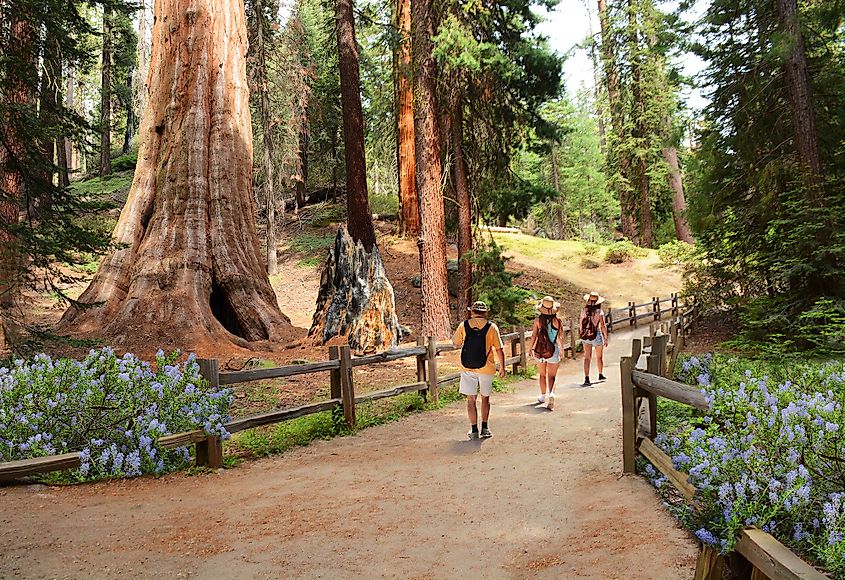
What's nice about Kings Canyon is that there are a variety of trails to explore, both easy journeys and challenging backpacking trips.
There's a 1/3 mile hiking trail that goes right up the General Grant Tree or a 1.5 mile trail with the North Grove Loop which goes by some of the other Sequoia trees within the Grant Grove.
Within Cedar Grove, there are moderate trails that will take you through the deep canyon such as Hotel Creek Trail which runs along the south side of the canyon and the Doc Cecil Trail on the north. For a more challenging hike, there's the 13 mile round trip up Lookout Peak, which goes up some 4,000 feet.
One popular backpacking trail is the 39.1 mile Rae Lakes Loop, which meanders through all manner of landscapes from lakes to rivers and mountain passes.
Another strenuous activity to do in the park is rock climbing. As mentioned above, there are several granite domes in the park for climbing. These include North Sentinel, The Obelisk and Buena Vista Peak. The latter has a one mile trail to the peak and is closest to Grant's Grove.
Due to its location by King's River, fishing is a popular activity as well. However, there are a few things to be aware of before going fishing. For one, you need a California fishing license and you are required to return certain fish to the water including California roach fish and Sacramento sucker.
Lastly, Kings Canyon has several camping grounds, including ones that operate year-round such as the Azalea Campground, which allows reservations up to four months in advance.
Kings Canyon National Park is a place of contrast. It dips low into one of the deepest canyons in the U.S. while also rising high through its rich population of Sequoia trees.
By visiting this park, one will see some of the best natural wonders in the U.S., from soaring granite domes to roaring waterfalls to hidden caverns.
Kings Canyon National Park is worth visiting for both experience backpackers looking for a challenging journey and casual travelers who just want to see Giant Sequoia trees in a majestic environment.
